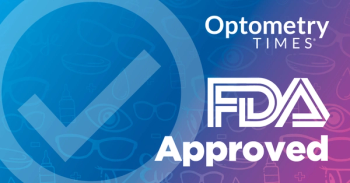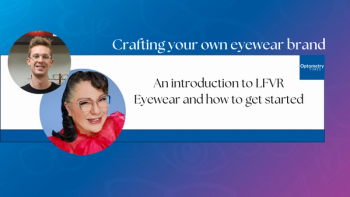
- September/October digital edition 2025
- Volume 17
- Issue 05
Association between ADHD and myopia among schoolchildren
A recent study reveals that ADHD in schoolchildren correlates with lower myopia prevalence and shorter eye length, suggesting intriguing links between vision and attention disorders.
A new Chinese investigation found that attention-deficit hyperactivity disorder (ADHD) is associated with reduced myopia prevalence, more hyperopic spherical equivalent refraction (SER), and shorter axial length (AL) in schoolchildren, according to Xiu Nian Chen, PhD, from the Department of Ophthalmology and Visual Sciences, The Chinese University of Hong Kong, Hong Kong.
Chen and colleagues explained that increased risks of astigmatism, strabismus, reduced near point of convergence, color discrimination, and contrast sensitivity have been reported in patients with ADHD.2-5 This is noteworthy considering that myopia is the most common ocular disease worldwide with a heavy public health burden in many parts of the world.6
Although a few studies have found no difference in the prevalence of myopia between patients with ADHD and healthy controls,2,7,8 Chen and colleagues noted that the methodologies of those studies may not have been able to detect a difference.
Another consideration is that the first-line treatment for ADHD, oral methylphenidate, inhibits the reuptake of dopamine and norepinephrine, thereby enhancing catecholaminergic activity in the brain regions involved in ADHD pathogenesis, which leads to symptom improvement.9-11 “Concurrently,” they stated, “the dopamine system plays a significant role in mediating myopic eye growth and is broadly associated with other myopic mechanisms.12,13 Thus, it is intriguing to explore whether oral methylphenidate affects myopia by influencing dopamine levels.”
Moreover, while near-work and outdoor activity affect the myopia prevalence, children with ADHD may have different patterns of near-work and outdoor activity compared to their unaffected peers, indicating that the impact of ADHD symptoms on myopia remains unclear.
Cross-sectional study
The children in the study were aged 6 to 8 years and underwent a cycloplegic autorefraction and AL measurements between 2016 and 2021. The ADHD diagnoses were established according to the ICD-10 criteria, and the ADHD symptoms were assessed using the Strengths and Weaknesses of ADHD-Symptoms and Normal-Behaviors Questionnaire.
The study included 474 children with ADHD and 9950 control children.
The authors reported that the age- and sex-adjusted myopia prevalence was lower in the ADHD group (21%) compared with the controls (26%; P = .02). Multivariable regression analysis showed that the children with ADHD had less myopia (OR, 0.75; P = .03), higher SER (β = 0.13; P = .04), and shorter AL (β = −0.07; P = .03).
Specifically, the patients with ADHD who were treated with oral methylphenidate had less myopia (OR, 0.61, P = .04), higher SER (β = 0.36; P < .001), and shorter AL (β = −0.25; P < .001) compared with the controls.
Chen and colleagues found that each additional month of treatment with oral methylphenidate was associated with a higher SER (β = 0.02; P = .01) and shorter AL (β = −0.01; P = .01).
“For each 1-point increase in attention-deficit scores, the children were found to be less myopic (OR, 0.88, P = .01), having higher SER (β = 0.07; P = .003), and shorter AL (β = −0.04; P = .001),” they reported.
They also found that the prevalence of myopia among children with ADHD increased to 32% during the COVID-19 pandemic compared with 23% before the COVID-19 pandemic (P = .04).
The authors concluded, “This cross-sectional study found that ADHD is associated with reduced myopia prevalence, more hyperopic SER, and shorter AL.”
However, they advised that because the effect sizes of these associations were small, the clinical relevance of the findings needs to be interpreted with caution.
References
- Chen XN, Zhang XJ, Zhang Y, et al. Association of attention-deficit hyperactivity disorder with myopia among school children. Invest Ophthalmol Vis Sci. 2025;66:36. doi:
https://doi.org/10.1167/iovs.66.9.36 - Grönlund MA, Aring E, Landgren M, Hellström A. Visual function and ocular features in children and adolescents with attention deficit hyperactivity disorder, with and without treatment with stimulants. Eye (Lond). 2007;21:494–502.
- Ho JD, Sheu JJ, Kao YW, Shia BC, Lin HC. Associations between attention-deficit/hyperactivity disorder and ocular abnormalities in children: a population-based study. Ophthalmic Epidemiol. 2020;27:194–9.
- Reimelt C, Wolff N, Hölling H, Mogwitz S, Ehrlich S, Roessner V. The underestimated role of refractive error (hyperopia, myopia, and astigmatism) and strabismus in children with ADHD. J Atten Disord. 2021;25:235–44.
- Bellato A, Perna J, Ganapathy PS, et al. Association between ADHD and vision problems. A systematic review and meta-analysis. Mol Psychiatry. 2023;28:410–22.
- Baird PN, Saw SM, Lanca C, et al. Myopia. Nat Rev Dis Primers. 2020;6:99.
- Ababneh LT, Bashtawi M, Ababneh BF, Mahmoud IH, Rashdan M, Zahran M. Ocular findings in children with attention deficit hyperactivity disorder: a case-control study. Ann Med Surg (Lond). 2020;57:303-6.
- Karaca I, Demirkılınç Biler E, Palamar M, Özbaran B, Üretmen Ö. Stereoacuity, fusional vergence amplitudes, and refractive errors prior to treatment in patients with attention-deficit hyperactivity disorder. Turk J Ophthalmol. 2020;50:15–9.
- Koda K, Ago Y, Cong Y, Kita Y, Takuma K, Matsuda T. Effects of acute and chronic administration of atomoxetine and methylphenidate on extracellular levels of noradrenaline, dopamine and serotonin in the prefrontal cortex and striatum of mice. J Neurochem. 2010;114:259–70.
- Quintero J, Gutiérrez-Casares JR, Álamo C. Molecular characterisation of the mechanism of action of stimulant drugs lisdexamfetamine and methylphenidate on ADHD neurobiology: a review. Neurol Ther. 2022;11:1489–1517.
- Wolraich ML, Hagan JF Jr., Allan C, et al. Clinical practice guideline for the diagnosis, evaluation, and treatment of attention-deficit/hyperactivity disorder in children and adolescents. Pediatrics. 2019;144:e20192528.
- Huang Y, Chen X, Zhuang J, Yu K. The role of retinal dysfunction in myopia development. Cell Mol Neurobiol. 2023;43:1905–30.
- Zhou X, Pardue MT, Iuvone PM, Qu J. Dopamine signaling and myopia development: what are the key challenges. Prog Retin Eye Res. 2017;61:60–71.
Articles in this issue
about 1 month ago
So you want to create a private label eyewear brand?about 1 month ago
Study establishes reference data set for GA lesion progressionabout 1 month ago
What a pharmaceutical representative taught me about glaucoma dropsabout 2 months ago
AI glasses fill in gaps for patients with low visionNewsletter
Want more insights like this? Subscribe to Optometry Times and get clinical pearls and practice tips delivered straight to your inbox.


















































.png)


